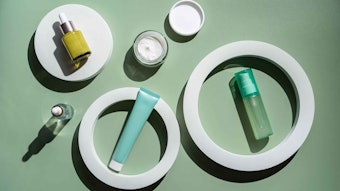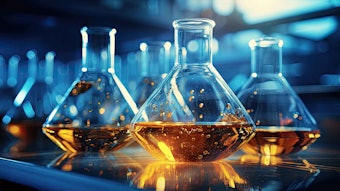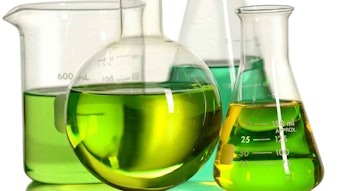Aesthetics is an important part of formulating personal care products. Aesthetics desired by the consumer vary depending upon the application. In products such as lipsticks, consumers look for hard solids, whereas in applications like serums, a soft liquid with talc-like feel is desired.
The aesthetics of a formulation largely depend upon hardness, playtime and cushion, and it is the responsibility of the formulator to tailor these attributes for the end product.
The terms cushion and playtime are commonly used to describe the feel of ingredients and formulations on the skin. If one places a compound or formulation on the index finger and rubs it on the forearm, both cushion and playtime can be evaluated.
Cushion
Cushion refers to the amount of compound that persists between the finger and forearm. The greater the distance between the finger and the forearm, the greater the cushion. Honey has a great cushion because one can feel a large amount of material between their finger and forearm, whereas water has little to no cushion because there is little distance between finger and forearm.
Playtime
Playtime refers to the length of time cushion persists. If the cushion is felt for a long period of time, the playtime is long. If the cushion collapses rapidly, the playtime is said to be short.
Cushion/Playtime
In most compounds the cushion and playtime are directly related. Honey has both a high cushion and high playtime. There are materials that have a good cushion but rapidly collapse to have a low playtime. Multi-domain alkyl silicone compounds having both liquid and solid portions in the same molecule and therefore are important materials for high cushion and low playtime. There are many applications in which in a high level of cushion and a short playtime are desired. These include lipsticks, sun products and many lotions.
Hardness
Hardness can be tailored with esters, and there are three major ways in which the hardness of an ester can be modified: reduction of carbon number, introduction of unsaturation, and introduction of branching.
Reduction of carbon number: The liquidity of an ester increases with decreasing carbon number. Behenyl behenate has a carbon number of 44 and a melt point of 68°C. Stearyl stearate has a carbon number of 36 and a melt point of 62°C. Decyl deconate has a carbon number of 20 and a melt point of around 9°C. While the liquidity increases with decreasing carbon number, the odor also has a tendency to increase as the reactants have more odor.
Introduction of unsaturation: The introduction of unsaturation into an ester result in more liquid products, but they need to have antioxidants present to retard rancidity. Saturated stearyl stearate has a carbon number of 36 and a melt point of around 62°C. Di-unsaturated oleyl oleate also has a carbon number of 36; however, it has two unsaturated groups present and a melt point around -5°C. Saturated behenyl behenate has a carbon number of 44 and a melt point of 68°C. Behenyl erucate has a carbon number of 44, but one unsaturation. It has a melt point of 45°C.
Introduction of branching: Branching is an efficient way to achieve liquidity. Linear stearyl stearate has a carbon number of 36 and a melt point around 62°C. Di-branched isostearyl isostearate also has a carbon number of 36; however, it has two branched groups present. It has a melt point of around -5°C.










